Did you know that osteoporosis is a metabolic condition that could have hormonal causes? In this blog article, Dr Vikram Sonawane, the Medical Director of Singapore’s Harmony Thyroid, Endocrinology and Diabetes Centre and Senior Consultant Endocrinologist, sheds light on osteoporosis.
Understanding Osteoporosis in the Context of Singapore
‘Osteo’ means bone, and ‘porous’ is from the word ‘porous’, which means filled with holes or gaps. Combining these two, Osteoporosis refers to a progressive bone disorder characterised by decreased bone density and mass.
Osteoporosis is increasingly becoming a prevalent condition in Singapore, which leads to more complications such as fractures (broken bones). According to the Asia Pacific Consortium on Osteoporosis’s projection, the number of new osteoporotic fractures in Singapore is expected to rise by about 60%, from more than 15,200 in 2017 to more than 24,000 in 2035. As a result of the increasing trend of osteoporosis and its complications, this will translate into higher economic and personal burdens.
Bone Health Through the Decades: From Formation to Peak Mass and Beyond
The bone is a dense connective tissue composed of collagen, bone cells, and calcium. Bone formation and bone resorption (bone breakdown) constantly occur in the body. In the first and second decades of life, bone formation exceeds bone resorption. However, this process becomes slower after the second decade of life. Peak bone mass is typically reached by the third decade of life, after which bone resorption then exceeds bone formation. If a person has a low peak bone mass, the risk of developing osteoporosis is increased.
What is the Metabolic Bone Disease Osteoporosis?
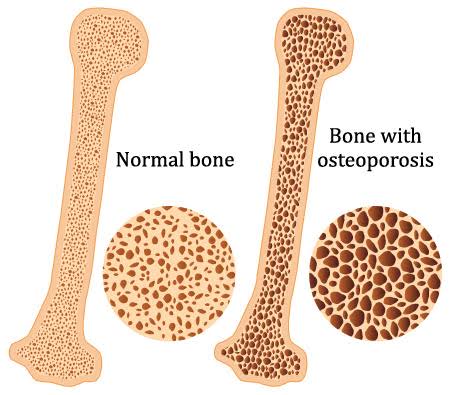
Osteoporosis is a metabolic bone disease in which the mass, mineral composition, and density of bones are low. Thus, bones become brittle, weak, and fragile and more susceptible to fractures from low-energy force that should ordinarily not result in fractures.
It is important to note that osteoporosis could be a symptom of underlying hormonal conditions, such as low oestrogen levels (in women), especially in a menopausal state when levels drop dramatically, low testosterone levels (in men), cortisol excess (Cushing’s syndrome) and low and high parathyroid hormone levels (Hypoparathyroidism and Hyperparathyroidism). Therefore, sometimes a general practitioner (GP) might recommend that you consult an endocrinologist (a medical doctor specialising in hormonal diseases) when you suffer from osteoporosis.
Symptoms of Osteoporosis
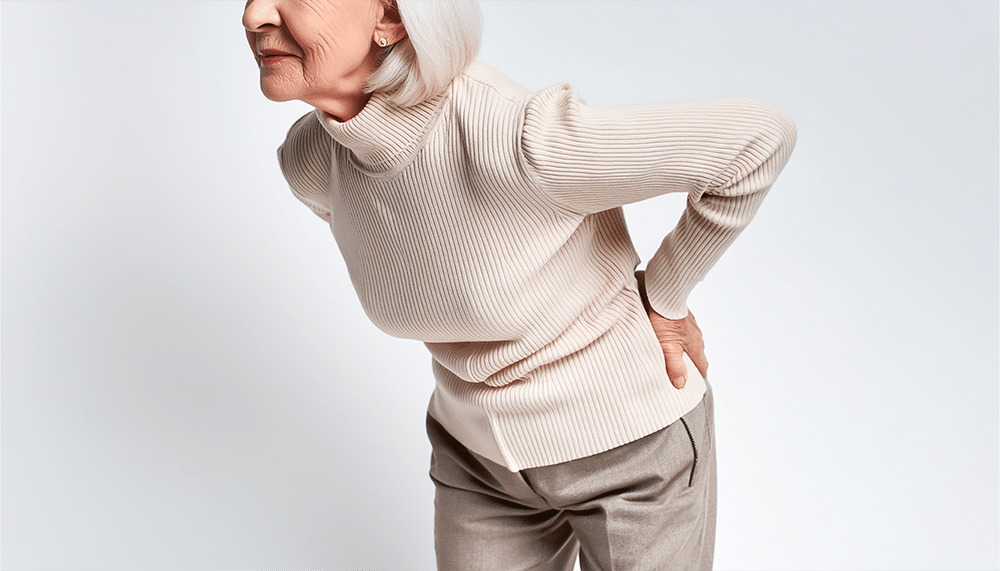
As osteoporosis is often asymptomatic till the person suffers fractures, it is called a silent disease, and early detection could prevent this. As the bone gradually gets brittle, thus it is not diagnosed in many until a fracture occurs. A fracture from a low-energy force (fragility fracture from trivial trauma) may be the first symptom you observe. You may have the following symptoms:
- Fracture: This is a loss of bone continuity or a break in the bone. The reduced density and low mineral composition lead to bone fragility, putting bones at greater risk of sustaining a fracture, especially from low-energy force. For example, a minor fall, which should typically not cause a fracture, can lead to osteoporotic fractures. Osteoporosis-related fractures are more common in the vertebral column or spine, hip bone, and wrist bone.
- Stooping: A bent posture due to an abnormal upper back curvature can occur as bone density decreases and the vertebrae weaken.
- Loss of Height: Loss of bone density can result in compression fractures of the spine or vertebrae, which can cause loss of height.
- Low Back Pain: Compression fractures in the lumbar vertebral column or lower back result in low back pain.
If you have the symptoms above, it may be advisable to consult an Endocrinologist to manage your condition.
An Endocrinologist’s Tips for Managing Osteoporosis
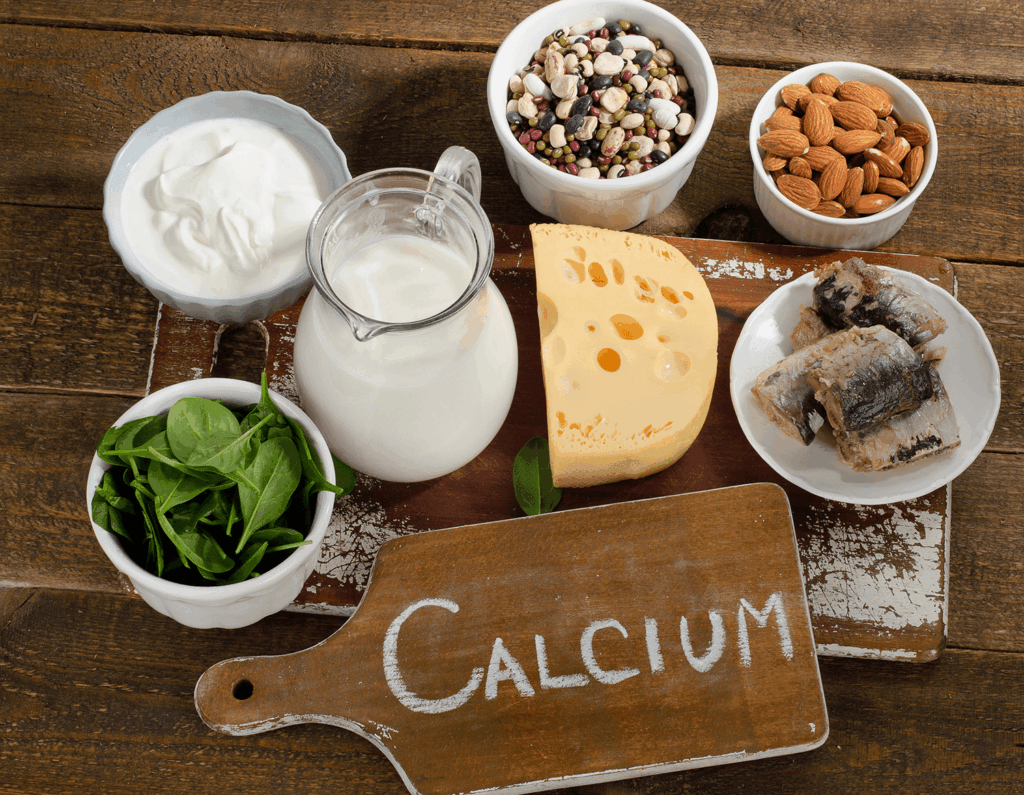
At Singapore’s Harmony Thyroid, Endocrinology and Diabetes Centre, Senior Consultant Endocrinologist Dr Vikram is well-versed in managing osteoporosis. Here is a general guideline to enhance the quality of life of patients with osteoporosis:
Nutrition
Calcium and vitamin D play very important roles in bone formation.
- Calcium is stored in the bones, accounting for a large percentage of bone mineral composition. Eating calcium-rich foods, such as milk, cheese, tofu, soy, and salmon, will provide your body with calcium for bone formation.
- Vitamin D helps in the uptake and absorption of calcium. A deficiency of vitamin D means that calcium cannot be well absorbed, potentially leading to low bone density. Foods rich in vitamin D include salmon, egg, milk, and cod liver.
Besides eating foods rich in calcium and vitamin D, taking prescriptive supplements can also alleviate calcium and vitamin D deficiency.
Exercise
A sedentary lifestyle is a risk factor for osteoporosis and can worsen bone density loss if you already have osteoporosis. You can consider doing the following activities:
- Engaging in Regular exercise will help you strengthen your muscles and bones. Yoga, jogging, weight-bearing exercises, tai chi, brisk walking, and running are examples of exercises that can promote bone health.
- Working with a physiotherapist to help you determine suitable types of exercise and movements to help strengthen your bones.
Preventing Falls and Fractures
Home safety tips to reduce fall risks
Preventing falls is crucial for individuals with osteoporosis. Here are some key home safety tips:
- Remove tripping hazards: Clear walkways of clutter, secure loose rugs and fix uneven flooring.
- Improve lighting: Ensure adequate illumination, especially in hallways, stairways, and outdoor areas.
- Install handrails: Secure handrails along stairs and in bathrooms for added support.
- Use non-slip mats: Place these in bathrooms, kitchens, and other areas prone to wetness.
- Organise for accessibility: Keep frequently used items within easy reach to avoid overreaching or bending.
Using assistive devices for stability and mobility
Assistive devices can significantly enhance stability and reduce fall risks:
- Walking aids: Canes and walkers provide additional support and balance.
- Grab bars: Install these in bathrooms and other areas where extra support is needed.
- Seat lifts: These can assist in safely transitioning from sitting to standing positions.
Hip protectors: While not always practical, these can reduce hip fracture risk if worn during a fall.
Medical Treatments
An Endocrinologist can prescribe medications to treat osteoporosis by reducing bone resorption, promoting osteoblastic or bone formation activities, etc.
Another treatment option to consider is hormone therapy, which replaces hormones such as oestrogen that decline during menopause and can help postmenopausal women maintain stronger bones and help prevent fractures.
What Will an Endocrinologist Do for Osteoporosis?
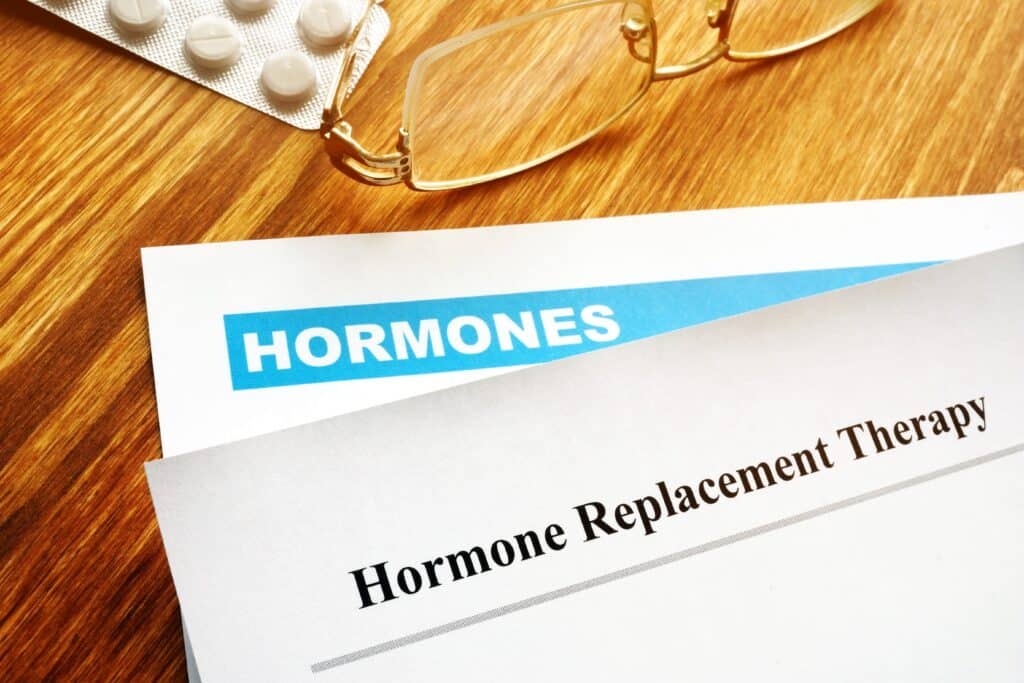
Provide personalised advice on lifestyle modifications to accommodate bone health.
An endocrinologist will:
- Assess individual risk factors and current lifestyle habits.
- Recommend specific weight-bearing and muscle-strengthening exercises tailored to the patient’s condition.
- Provide nutritional guidance, emphasising calcium and vitamin D intake.
- Advise on fall prevention strategies, including proper footwear and home modifications.
Manage osteoporosis alongside other endocrine conditions.
Endocrinologists are well-positioned to:
- Evaluate and treat underlying hormonal imbalances that may contribute to bone loss.
- Adjust treatments for other endocrine conditions to minimise adverse effects on bone density.
Recommend regular checkups and bone density scans
An endocrinologist will:
- Schedule regular bone density scans (DXA scans) to monitor progression and treatment efficacy.
- Conduct periodic assessments of fall risk and overall bone health.
- Adjust treatment plans based on these regular evaluations to ensure optimal management of osteoporosis.
By addressing these aspects comprehensively, endocrinologists play a crucial role in managing osteoporosis and reducing fracture risks in patients.
Consult an Osteoporosis Doctor in Singapore
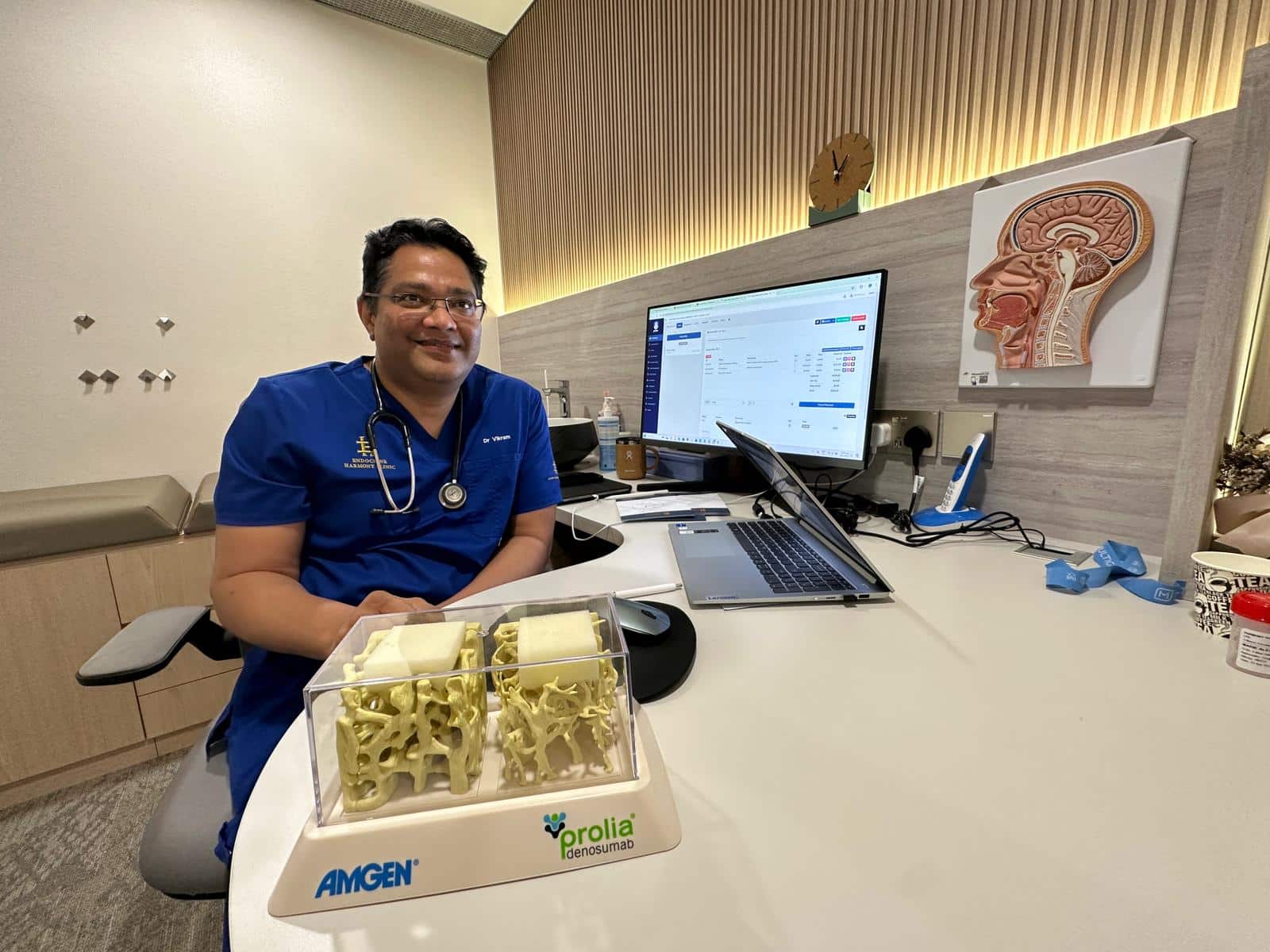
Early detection and treatment are essential in the management of osteoporosis, and it can help you live healthier and longer. If you have some of the risk factors of osteoporosis, it is important to consult an osteoporosis specialist in Singapore and get a bone density test done to determine if you have osteoporosis. If you are already experiencing symptoms, it is equally important that you seek professional medical help to get the right osteoporosis treatment in Singapore. Osteoporosis is a metabolic disorder that often involves hormonal conditions, and endocrinologists are experts when it comes to treating such conditions.
For personalised tips on living with osteoporosis, book an appointment with Dr Vikram Sonawane, an experienced Senior Consultant Endocrinologist and Medical Director at Singapore’s Harmony Thyroid, Endocrinology and Diabetes Centre. Regular clinic appointments and adhering to your doctor’s advice will help improve treatment outcomes.
References
- Porter, J. L., & Varacallo, M. (2023, August 4). Osteoporosis. StatPearls – NCBI Bookshelf. https://www.ncbi.nlm.nih.gov/books/NBK441901/
- Rachel Elizabeth Whitaker Elam (n.d.). Osteoporosis: Practice Essentials, background, pathophysiology. https://emedicine.medscape.com/article/330598-overview#a3
- Department of Health & Human Services. (n.d.). Bones. Better Health Channel. https://www.betterhealth.vic.gov.au/health/conditionsandtreatments/bones
- Tan, H. C., Seng, J. J. B., & Low, L. L. (2021). Osteoporosis awareness among patients in Singapore (OASIS)—a community hospital perspective. Archives of Osteoporosis, 16(1). https://doi.org/10.1007/s11657-021-01012-6
- International Osteoporosis Foundation, The Asia-Pacific regional audit: epidemiology, costs & burden of osteoporosis in 2013. 2013: Switzerland.
- Chan, D., Chang, L., Akesson, K. E., Mitchell, P., Chen, C., Lewiecki, E. M., Lee, J. K., Lau, T. C., Songpatanasilp, T., Lee, K. B., Kim, K. J., Chen, J., Huang, K., Gau, Y., Chang, Y., Ebeling, P., Xia, W., Yu, W., Suzuki, A., . . . Wu, C. (2018). Consensus on best practice standards for Fracture Liaison Service in the Asia-Pacific region. Archives of Osteoporosis, 13(1). https://doi.org/10.1007/s11657-018-0463-3
